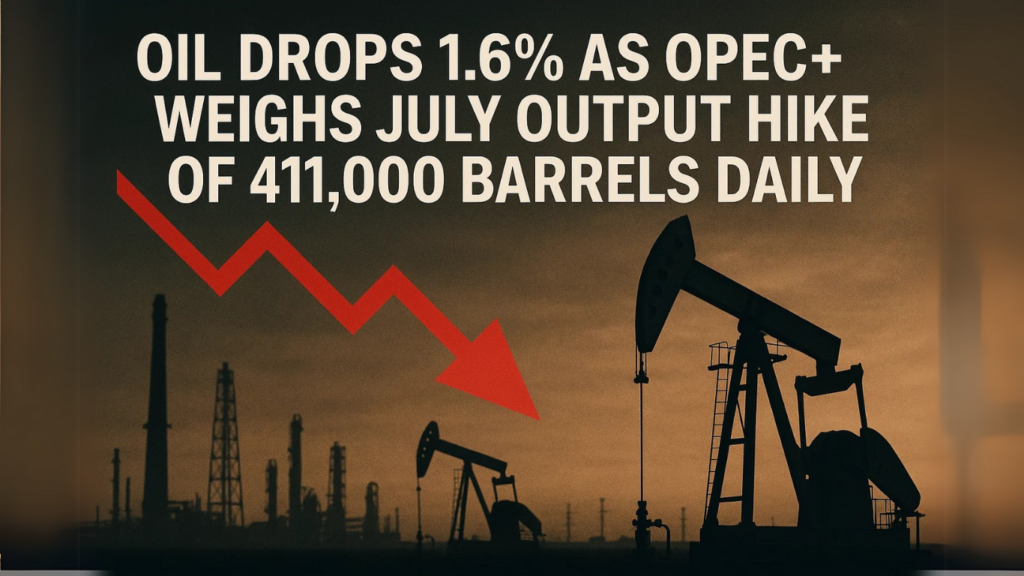Crude oil prices extended losses Thursday after reports indicated that OPEC+ is evaluating a significant production boost for July, raising fears that supply may soon outpace demand.
Brent crude fell by $1.05 (1.62%) to $63.86 per barrel by 0651 GMT, while West Texas Intermediate (WTI) slipped 97 cents (1.58%) to $60.60.
According to Bloomberg, delegates from the OPEC+ alliance, which includes members of the Organization of the Petroleum Exporting Countries and major allies like Russia, are discussing a 411,000 barrels-per-day (bpd) increase. The decision, expected at their June 1 meeting, would mark a third consecutive month of supply expansion.
The output discussions follow previous commitments to gradually unwind pandemic-era production cuts, with phased additions already set for May and June. If fully implemented, OPEC+ could return 2.2 million bpd to the market by November, based on Reuters estimates.
Helima Croft of RBC Capital noted in a Wednesday report that a July hike—primarily led by Saudi Arabia—is “the most likely outcome.”
“The key question remains whether voluntary cuts will taper off entirely before autumn,” Croft added, referring to the group’s original drawdown schedule.
U.S. Inventory Surge Pressures Prices
Oil’s decline accelerated after the U.S. Energy Information Administration (EIA) reported unexpected builds in crude and refined fuel inventories.
- Crude stockpiles rose by 1.3 million barrels, reaching 443.2 million barrels for the week ending May 16
- Analysts had forecast a 1.3 million-barrel draw
- Gasoline and distillate demand dropped, signaling a softening in consumer activity
- Crude imports hit a six-week high, fueling oversupply concerns
Emril Jamil, senior analyst at LSEG Oil Research, commented that the surprise inventory rise will exert downward pressure, particularly on WTI. “This could incentivize more U.S. exports to Europe and Asia,” he added.
Market Weighs Supply Against Demand
While a production increase may help stabilize prices for oil-producing nations, market dynamics suggest limited demand elasticity—especially if macroeconomic uncertainty persists.
Key points moving forward:
- OPEC+ faces internal debate over how quickly to restore pre-cut volumes
- Demand remains uncertain amid mixed economic indicators from major markets
- A rapid supply ramp-up could strain fragile price stability, especially if inventories continue to build
Investors are expected to closely monitor developments ahead of the June 1 OPEC+ meeting, as the decision will likely set the tone for global oil prices through the summer months.


